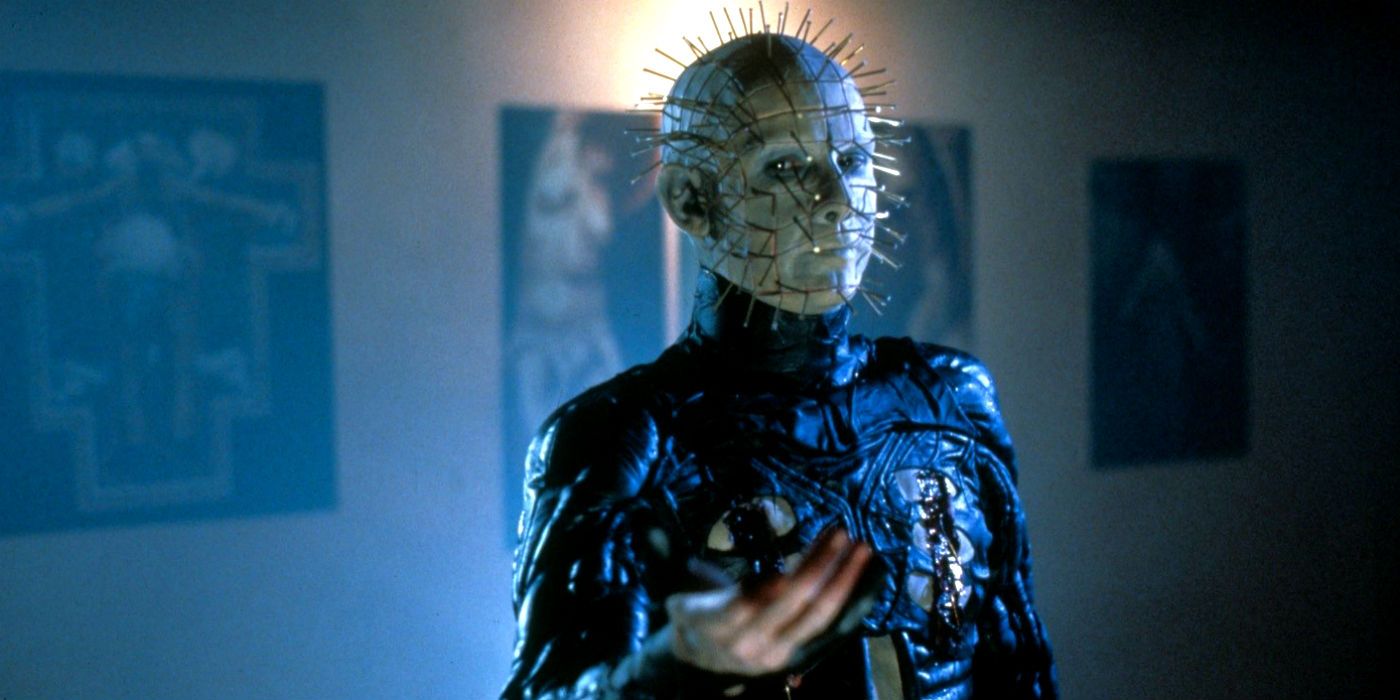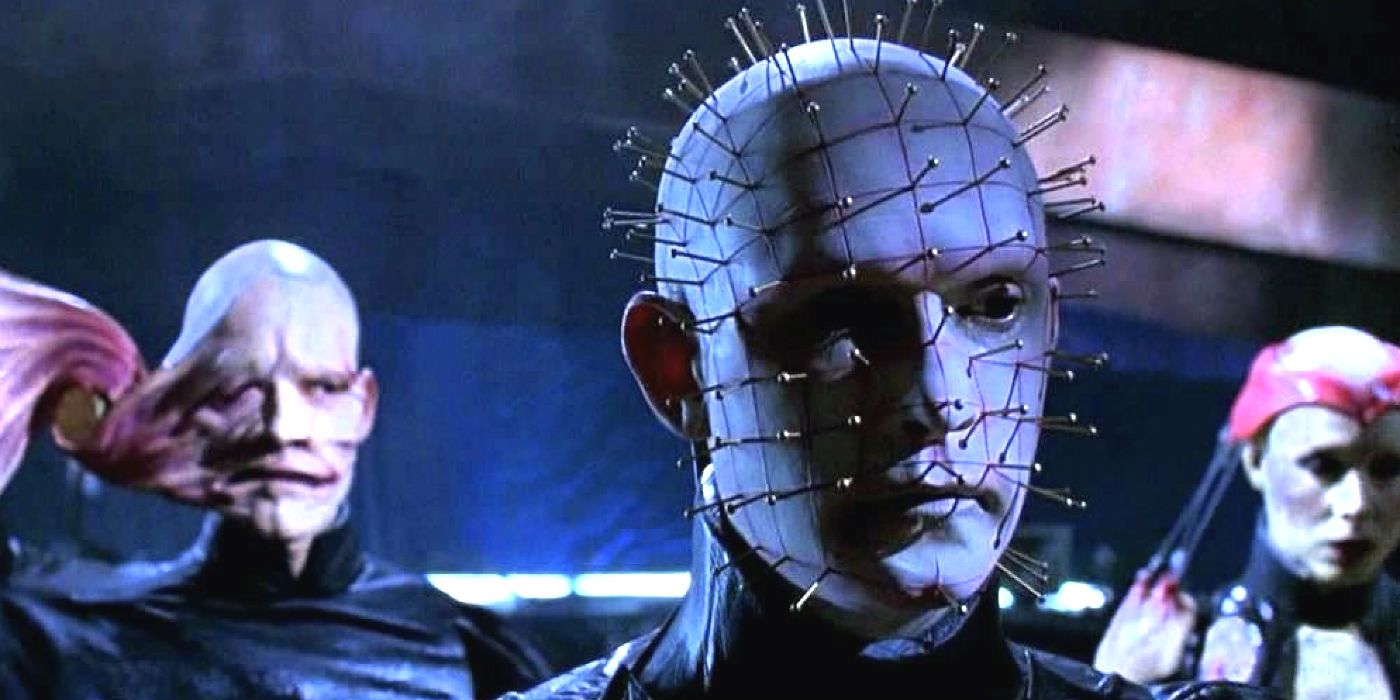Since 1987, the name Hellraiser has been synonymous with the extra-dimensional villain lovingly referred to by fans as Pinhead, but the choice to go all-in on the franchise's main antagonist was a mistake.
Over the course of ten movies, Pinhead has gone from the mysterious villain in the shadows to a one-liner dropping main character. The diminishing popularity of the series with both fans and critics can be blamed on quite a few things, but making Hellraiser all about Pinhead is arguably one of them.
Series creator Clive Barker referred to him as simply the “Lead Cenobite” and “Hell Priest” in the original source material for the movies, but it was the nickname Pinhead, which was coined by the make-up crew on the set of the first film, that stuck. The name became semi-officially canon in Hellraiser III: Hell on Earth when the demon is referred to as such by the hero, Joey Summerskill.
Pinhead Became The Focal Point Of The Franchise
The story behind the name should have made it clear the original intent was never to have the character become the focal point of the Hellraiser series. Franchises being what they are, producers knew they had a moneymaker when fans couldn’t get enough of the Cenobite with nails in his head after the first movie came out. Dimension Films were certain they had another Jason Voorhees or Freddy Krueger on their hands. Culturally, Dimension was correct. It is hard to argue Pinhead isn’t one of the most recognizable faces in horror. However, where the studio went wrong was by not understanding the character itself.
Hellraiser III was where Pinhead started being written as a lead role like so many other slashers, despite only being on screen in the first movie for under ten minutes. The third movie is uneven, but it does have its fanbase. After that, the franchise declines. It speaks to the talent of Pinhead actor Doug Bradley that the character became so popular despite having such little screen time, even though he did have a larger role in Hellbound: Hellraiser II.
The problem, ultimately, is this: Pinhead is not the typical villain. He is practically neutral and more of an enforcer of a cosmic contract. If someone dares mess with the Hellraiser puzzle box as they pursue their forbidden pleasures, he and the other Cenobites come to collect. Pinhead was initially meant to act as a menacing threat in the background, rather than take the lead. In the first movie, Frank is clearly the villain whereas the Cenobites are a third party acting in their own interests while the Frank vs. Kirsty story develops. In Hellbound, Dr. Channard is the primary antagonist, battling both protagonist Kirsty Cotton and the returning Cenobites who are, again, just trying to do their jobs.
Pinhead’s characterizations are all over the place from the third film forward. First, he’s a wise-cracking killer like Freddy, then he’s a co-protagonist in both demon and human forms. The fifth and sixth films, Inferno and Hellseeker, weren’t originally written as Hellraiser movies and shoehorned Pinhead in. In Inferno, Pinhead is a therapist. As has been done in other horror franchises, the Hellraiser writers made questionable decisions.
While bad scripts and cash grabs all played big roles in lowering the overall quality of the Hellraiser series, the total bungling of Pinhead’s character, along with Doug Bradley's departure, meant the only entries still worth watching were the first two and possibly the third depending on how much horror fans love the Hellraiser universe. It speaks to how iconic the character is, though, that he remains so popular over thirty years after his debut and explains why a reboot is planned.


